Nicola Griffith's Blog, page 7
March 23, 2025
Love, death, and the changing of the seasons
March is a complicated month for me. A little over a week ago was the 32nd anniversary of both the publication of my first novel, Ammonite, and my diagnosis with MS. And today specifically, 23 March, marks both a very good day 46 years ago, and a very bad one 24 years ago.
The night of 23 March, 1979, was a grumpy sort of evening for me—I was out at one of Leeds’ biggest queer clubs, restless and unsettled. It was spring—the sap was rising—and the tide of life felt strong. But I was unsatisfied with everyone and everything; aware of some huge change heading my way. I just had no notion of it’s shape. And then amid the thump and pulse of music I got talking to a woman with long, henna’ed hair and, well, that was my life sorted for the next ten years. What had been a bad day turned into the beginning of a pivotal decade, ten wonderful years with a woman who helped form who I am today. We are still friends.
But 24 years ago today, 23 March, 2001, was when my sister Carolyn died. She had scleroderma, or systemic sclerosis, an autoimmune/rheumatoid disease with a life expectancy (at the time) of 5-7 years. I’d been angry with her for years: she would not take care of herself; she would not fight for the proper treatment; she refused to take her situation seriously. In fact, she was in such denial that she persuaded my entire family there was nothing much wrong with her. Even at the end of January, 2001, her partner of 14 years and my parents and remaining sisters all thought she was just getting sicker but it would be a few years.
In January that year I flew to the UK, again (I flew to the UK five times in ten months). I read them the riot act: She now has six or, at most, eight weeks to live. You need to be ready to care for her, I said. There was a lot of shouting. There was a lot of disbelief—the doctors weren’t saying this! Why would I say such a thing? Much resentment. Shock. And I was just so sad: I’d tried so many, so very many times to talk to Carolyn—get a bone marrow transplant; get a lung transplant; get a stem cell transplant (though at the time it would have been an immune ablation and then just…wait for it grow back; yes, I did the research because no one else would—not even her fucking doctors on the NHS). But she would not listen; no one would listen. And she was an adult in charge of her own life. Her body, her choice. So she died. She was 47.
Tomorrow, 24 March, is the 6th anniversary of my father’s death. A week later, 1 April, is the 6th anniversary of Vonda McIntyre’s death. Three days later it’s my (dead) mother’s birthday; a week after that my (dead) sister Helena’s birthday.
For me spring is a complicated time—full of the sap rising, birds singing, love and joy and renewal in the air; equally weighted with endings and old grief. Historically, too—in northwest Europe, at least—it is a strange and frightening month: the winter food stores are dwindling or wholly gone, th elambs are newly born and and green shoots are everywhere but no crops are yet ripe. March was when many people starved just as new life was burgeoning all around them. Cruelty and hope.
Over the decades I learnt to just sit with that mixed message and not try to sort it out into neat packages. Life is just life—and the point is to just live it as joyfully and fully as possible.
I’ll leave you with a passage from near the end of Menewood that is, pretty much, my guiding philosophy.
When she took a break she sat with her back against the enclosure fence, arms straight and hands flat on the dirt, face lifted to the sun, muscles tired and relaxed. […]
Menewood had spoken to her from the moment she found it. Here, now, she could feel the life in its dirt, like a hum under her feet, her sit-bones, her hands. She watched an ant climb the leaves of the last turnips waiting to be pulled. Each leg was segmented, tiny hairs glinted on its abdomen, and its eyes seemed latticed and grey as a sieve. Its hard casing gleamed the dark brown of burnt honey. A tiny thing but perfect in every way. Even the turnip stem with one leaf missing was exactly as it should be: perfect in its imperfection, beautiful, alive. The whole garth felt like a pool of life, endlessly renewed by the hidden font, the spring welling at the centre of all things.
Between her fingers she saw a speck of worm cast, the glitter of mica, and, there, by a log, a wood louse–so many legs it looked as though it swam as much as walked–moving into the cool dark realm under the bark. She dug her fingers in the dirt and felt each crumble and granule. Each was just the right shape to make the perfect space between it and the next, space enough for the worm to glide through and between. Each was just the right weight for the mole to move aside as it followed the worm. Just the right consistency to collect and hold water for the roots of growing things to absorb. It was as though this whole marvellous, interlocking puzzle were cut to fit together exactly, like the figures Cian had once carved, so long ago.
And it no longer mattered that there was no Cian; it mattered only to be here, to feel the life, the purpose in the life under her feet, under her own skin. She saw how each leaf hanging from the tree was designed to catch the right portion of light and gain the most shelter from the wind. She saw the same pattern in her skin and the weathering wood, and knew it was repeated in the wax honeycomb laid down by bees. It was the pattern of life, and built to a purpose. And that purpose was itself life. She had only to decide to live it.
Sunlight lay upon her like a blessing.
March 22, 2025
Maps!
 Side-by-side geo-referenced map app
Side-by-side geo-referenced map appOne if the things my supporters on Patreon (thank you!) have asked for most consistently is maps. So today I’ve written a massive, all-about-my-maps post.
This first map post is more of an introduction, talking about how my love of maps began, why they are essential to my creative process, and detailing my tools, techniques, and discoveries (such as the National Library of Scotland’s side-by-side geo-referenced map tool). There will be many future posts on the subject, all of which will present a selection if my favourite hand-made maps and behind-the-scenes discussion of the various battles and skirmishes and diplomatic tensions of Hild, Menewood, and Spear.
Only for Patreon members though. So if you love maps, go sign up—and support the production of many more stories and maps. And thank you.
March 20, 2025
Happy Spring!
Today is the Vernal Equinox: what people in the US call the first day of spring, though in the UK I would say that most people consider spring to have started once the first snowdrops emerge and the crocuses open.
Either way, it’s spring! And even though I’ve been making these for my Zoomorphic project on Patreon (to raise money for publicists), fuck it, here you, have these for free today because it’s good to feel good.
First up is foxes and swallows playing for sheer joy. The ‘fox’ is a figure I adapted from the Book of Kells (folio 325v—very heavily adapted!) and the swallow is something I made up entirely based about that simple interlace pattern that joins it body and tail.
 Fox and swallow chasing for fun to celebrate spring
Fox and swallow chasing for fun to celebrate springFor more on the fox figure, you’ll have to wait for an upcoming Patreon post (“The Cats of Kells,” scheduled for Saturday, 3 March).
And here is my idea of an Early Medieval hedgepig—not adapted from anything, just made up, but using early medieval-style eyes, faces and feet. It is emerging from hibernation and delighted by the sparkling freshness of the world. Today, I hope you are, too.
 Hedgepig emerging to the delights of spring
Hedgepig emerging to the delights of spring
March 18, 2025
The Vampire Tapestry
Suzy Charnas was a friend. I was gutted when she died. She wrote some brilliant, absolutely game-changing books. One of them, The Vampire Tapestry, is reissued today as part of the Tor Essentials line that publishes new editions of SFF books “of proven merit and lasting value, each volume introduced by an appropriate literary figure.”
I wrote the introduction to this one.1 I had fewer than 2,500 words to play with or I would have said more.
Suzy McKee Charnas is an award-winning writer of powerful, prismatic prose. She is a mirror-maker, reflecting both the reader and the world. Her gift is to not just to make us look but make us see—and, just as importantly, feel glad to have seen. She published 11 novels, one play, two works of nonfiction, and three collections. The Vampire Tapestry is her masterpiece.
My first introduction to Charnas’s work was “Scorched Supper on New Niger,” a not-quite novella-length slice of far-future space opera that had me grinning with delight one minute and slack-jawed with shock the next as it deftly brought me face to face with my own assumptions. (The only other writer who was able to pull that trick so neatly was Karen Joy Fowler, with “Game Night at the Fox and Goose.”) Amazed, I went looking for more, and found Charnas’s first novel, the post-apocalyptic Walk to the End of The World (1974)—first of the four-novel Holdfast Chronicles—a dazzling, horrifying vision of the gender-war endgame. The sequel, Motherlines, was one of the first (if not the first) novels in English to feature no men at all.
In the space of a month I had read three superlative works unlike anything I’d encountered. It was clear I was dealing with a fearless writer. I picked up The Vampire Tapestry eager to find out what such a writer might do with a vampire.
And, oh, I did! The Vampire Tapestry is truly special. Go read it.
March 15, 2025
Zoomorphic Birds
Just posted on Patreon: an image-heavy piece on designing zoomorphic birds based on the Book of Kells and other insular art. This is one, though, is available only to paying members because I really need to start getting some money in to pay for pubicists—those books are coming out soon…
And of course Patreon members will get news about those books at least one day earlier than anyone else. Just another incentive to sign up for as little as $3 a month.
 Book of Kells, folio 277r,
Book of Kells, folio 277r,  Two Geese—my design based on a George Bain greeting card
Two Geese—my design based on a George Bain greeting card
March 13, 2025
Improve your cholesterol: drink more!
 One of my actual pints of Guinness photographed on a lovely afternoon in our local pub.
One of my actual pints of Guinness photographed on a lovely afternoon in our local pub.Image description: A delicious-looking full pint of velvet brown Guinness with the harp logo and “est 1750, Guinness Brewed in Dublin’ stamped on the glass in white—the same colour as it smooth white head…
Ha! Well, this morning this bit of science news warmed the cockles of my heart: an article from the Journal of the American Medical Association (JAMA) with the riveting title “Lipid Profiles After Changes in Alcohol Consumption Among Adults” which boils down to:
In this cohort study of 57 691 individuals undergoing annual health checkups at a center for preventive medicine in Japan, alcohol cessation was significantly associated with increased LDL-C and decreased HDL-C levels compared with continuing alcohol intake. Alcohol initiation showed opposite significant associations, with these changes more pronounced at higher consumption levels.
In other words, the more you drink, the better it gets!
Yes, yes, I know, alcohol has others effects that aren’t so great, don’t spoil it for me. Let me enjoy my moment of chortling revenge to all those neurologists who keep telling me people with MS should not drink. Guinness for the win!
March 10, 2025
Change or Die—for just $1.99!
Bookstore.org | Apple Books | Amazon | Barnes&Noble | Google Play
Ammonite was my first novel. Read all about it here. But if you want to know why it so very appropriate that it’s for sale during Women’s History Month, here are some clues:
Uncompromisingly packed with non-dogmatic feminist and queer ideologies… Griffith reveal[s] herself to be fluent in presenting realistic science and its implications, capable of cinematic clarity in her prose, insightful with emotions and character. — Washington Post Book WorldNicola Griffith’s first novel, Ammonite, flies all the banners of traditional sf but beneath the banners, it is armed to the teeth against convention. — InterzoneAmmonite represents a major, no, make that a revolutionary change…a remarkable departure from the commonplace. — LocusA serious assault on conventions so enormous that it is very much more dangerous, sometimes, than writing about lesbianism. — Dorothy AllisonIt charts a new and different kind of women’s space.” — Atlanta MagazineNicola Griffith is a promising successor to Ursula K. Le Guin and James Tiptree, redesigning gender and power relations in alien milieux. — The FaceStill curious about why I’ve been inducted into the SFF Hall of Fame? About why this little mass market paperback original was named #25 on Esquire‘s Best Science Fiction of All Time? (“Gripping and gutsy, rich in layers of feminist and queer thought, Ammonite gleefully throws a stick of dynamite into the sci-fi firmament.”) This is where it all began. And here’s your chance to try it for just $1.99. All North American digital platforms.
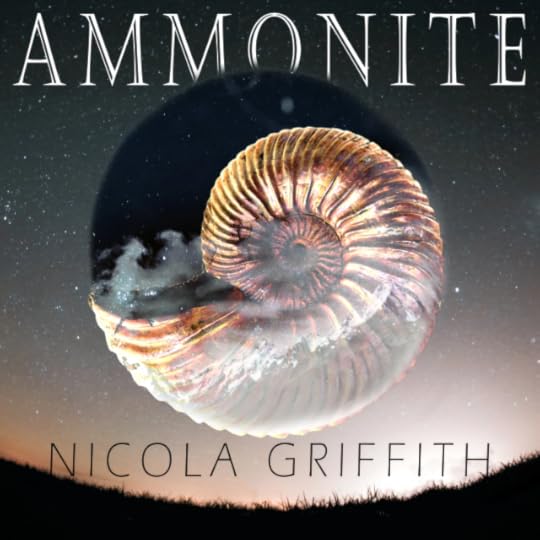
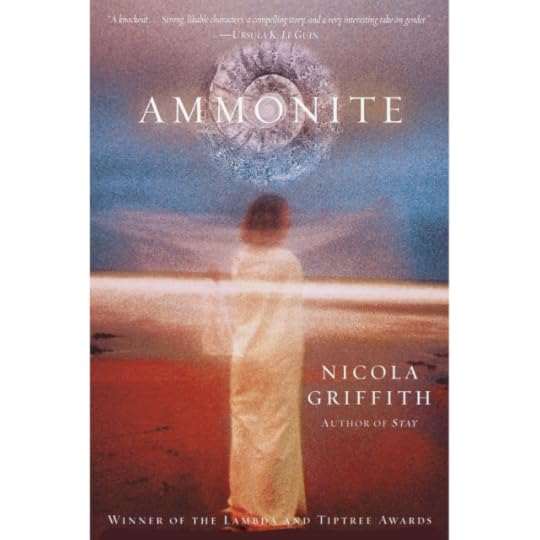
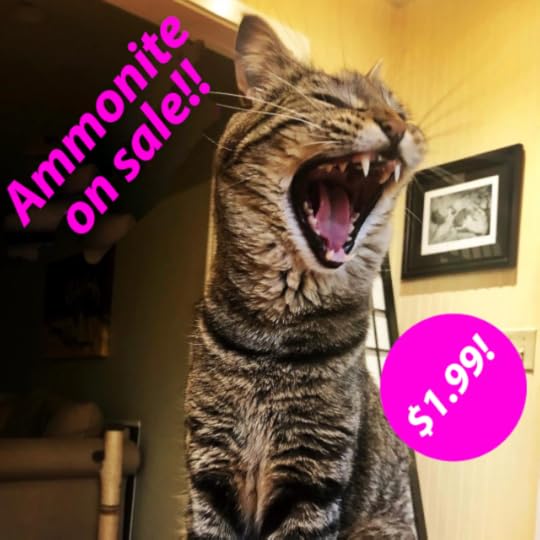
Bookstore.org | Apple Books | Amazon | Barnes&Noble | Google Play
March 8, 2025
Lesbian Poems #1
I’ve been happily creating and scheduling posts for Patreon—there’s a lot to look forward to. Just up today, the first of several posts of lesbian poetry—which seems appropriate for International Women’s Day. These poems are about love, lust, rage, wonder, confusion, sorrow, and desire.
I dithered, frankly, about whether to call them Queer Poems or Lesbian Poems but I’ve always thought of myself as lesbian—or dyke—and realised I tend to use ‘queer’ in public fora where I want to make it absolutely clear that I’m not a TERF—a lot of whom identify as Lesbian and/or Radical Feminist. I’m very much a feminist, I always have been and am proud to be so, but self-identified Radical Feminists often pissed me off—many (note: not all, not nearly all, just a surprisingly large number) were white, well-educated, middle-middle class with a puritanical streak a mile wide, disapproving of anything remotely connected to physical joy, whether sex and drugs and good food and wine and loud parties and sweaty sports and actually, y’know, *doing* anything useful for other women except writing endless position papers on theories that, if (definitely if, because while some were, many weren’t) useful frameworks to begin with, almost always devolved into academic-style sniping and bitter battle lines. But I’m tired of TERFs and their ilk influencing any damn fucking thing I do, no matter how slightly, so, yes, of course I’m queer, but first and foremost I’m a right old dyke, a not-even-remotely bisexual lesbian (I have nothing against bisexuals! I’m married to one!), so: Lesbian Poems. Occasionally Big Bad Dyke Poems.
Todays post, the first of the series, has two short pieces, both absolutely Safe For Work, and so available to all Patreon members. Which means you can go join now, for free, and read these, for free (along with a variety of other all-members posts). So go take a look. And on this International Day for All Who Identify As Women enjoy, and celebrate us in all our diversity.
March 7, 2025
Best places to be a working woman in 2025
Just in time for International Women’s Day tomorrow, the Economist has one of their lovely interactive-data articles up about the best countries in the OECD to work as a woman from 2016 to today. The top countries are always the same four (though they swap places with each other) Nordic nations: Iceland, Finland, Norway, and Sweden. Similarly, the bottom four countries are always the same: South Korea, Japan, Turkey, and Switzerland.
I’ve been following this index since it began, so none of that surprises me. What pleases me is Britain’s rise from below the OECD average to above it. What saddens and annoys me is the USA’s consistent below-average performance. What down right worries me, in light of Trump’s second presidency, is Hungary, which demonstrates what happens when a country is run by an autocrat—plunging from number 9 in the ranking in 2016, well above the OECD average, to a miserable 24, well below, today. Under autocracy women always, always suffer disproportionately. The economy generally follows.
Things are going to get a lot worse here for everyone—and very much worse for women. If you voted for Trump this time you made a foolish mistake. If this was the second time you voted for him, you are a fool.



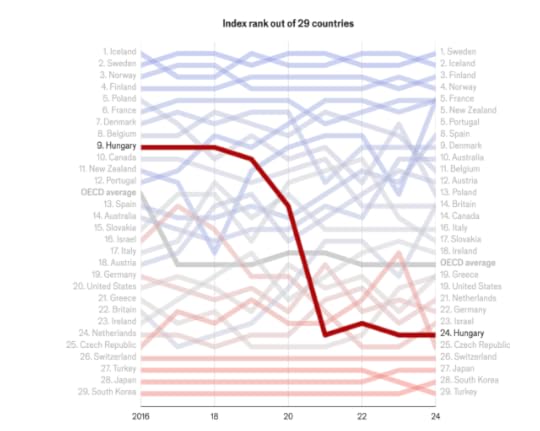
Image descriptions of four brightly-coloured chart of the 29 countries of the OECD (a club of rich countries), showing the ranks for women workers over the last 8 years, from top left to bottom right:
the top four consistently being Iceland, Sweden, Norway, and Finland, and the bottom four Switzerland, Turkey, Japan, and South Korea.Britain rising from number 22 in 2016 to number 14—above the OECD average—todaythe US rising from number 20 in 2016 to number 19—below the OECD average—todayHungary plummeting from number 9 in 2016 to number 24—below the OECD average—todayMarch 5, 2025
All the flavours of Spear
I keep forgetting to mention that Spear is now available in Spanish, French, and Japanese. A German translation is coming soon (but I don’t have any more information on that yet). Looking at the covers and titles is always interesting—figuring out how different cultures approach the same subject.
In Spanish, ‘spear’ translates literally to ‘lanza’, and that’s what the Spanish publisher, Duermevela—or perhaps the translator, Arrate Hidalgo—chose: Lanza.1 The covers of the English and Spanish editions are also very similar. The Spanish art director has darkened the colours a bit, reduced the size of the main image, and changed the typeface, but otherwise, it’s instantly recognisable.


The French and Japanese editions, on the other hand—wow, couldn’t be more different!
The Japanese cover art, from publisher Tokyo Shogensa (I’m sorry I dont know the artist’s name), illustrates that moment when Peretur blows a dandelion puff, sending the seeds purling into the air along with her hopes and anguished cry to her mother (which sets off a terrible chain of events). The translation is by Izumi Ichida, and the publisher chose the title Orezaru yari, or, roughly, The Unbreakable Spear—which tickles me because it’s very close to my original title for the book, Spear Enduring, which itself is the literal translation of the Old Welsh bêr-hyddur, or (‘hard spear’ ‘spear enduring’ ‘spear everlasting’) which Elen names her daughter after: Peretur.2 It’s difficult to make direct comparisons because Japanese literature is, to me, all upside down and backwards, and the characters literally mean nothing to me. Even I can tell, though, that in this edition there are no internal illustrations…
The French edition, from Argyll, translated by Marie Koullen, and with an afterword by Fabienne Pomel, lecturer at Université Rennes 2, will be out on Friday. I can’t speak to either translation or afterword because I haven’t seen a copy yet—but the foreign rights folks at Susanna Lea Associates, my agency, have been making wonderful choices regarding the quality of the various publishers so far, so I have no doubt everything will be, at worst, very good and, much more likely, stunning. I don’t know, either if the French will be using interior illustrations but, given they didn’t use Rovina Cai’s cover, I’m guessing not. Again, I’m afraid I don’t know who the cover artist is—but they did a wonderful job on the Late Iron Age hanging bowl, and I love the spear, so I’m happy.
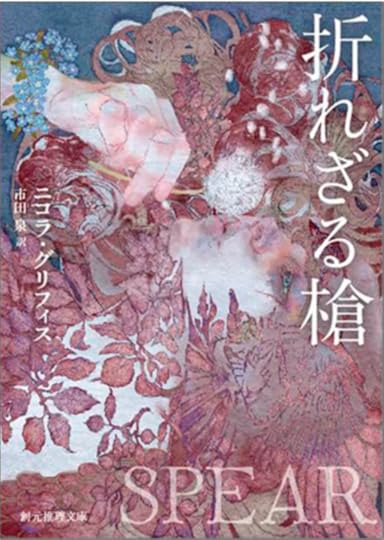
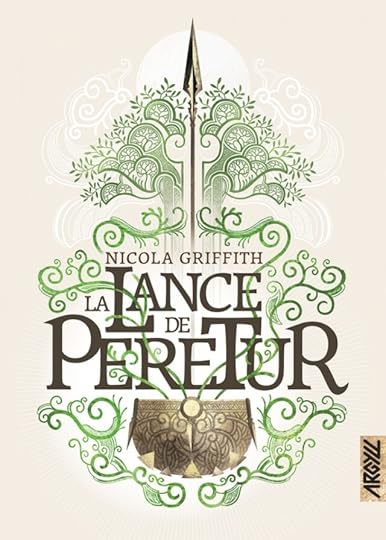
If any of my readers do happen to read Japanese, Spanish, French, or German and are willing to offer an opinion, I’d love to hear how the translations compare to the original.
According to my Spanish-speaking friends, it’s a wonderful translation. I’mnot very good at reading Spanish, though, so I don’t know—and keep forgetting to ask—how Hidalgo got around potential confusion regarding the Lancelot-equivalent character’s name, Llanza… ︎But my US acquiring editor, Sean McDonald (who’s been my editor for many books now) thought Spear Enduring sounded ” too viagra-y”, so I just went with Spear. Sean didn’t do the hands-on editing for Spear—that was Lydia Zoells, an assistant editor who also happened to have done her masters project on Arthurian literature. So a big win all around—she did a great job.
︎But my US acquiring editor, Sean McDonald (who’s been my editor for many books now) thought Spear Enduring sounded ” too viagra-y”, so I just went with Spear. Sean didn’t do the hands-on editing for Spear—that was Lydia Zoells, an assistant editor who also happened to have done her masters project on Arthurian literature. So a big win all around—she did a great job.  ︎
︎



